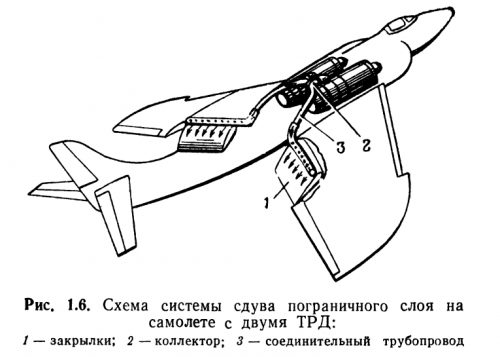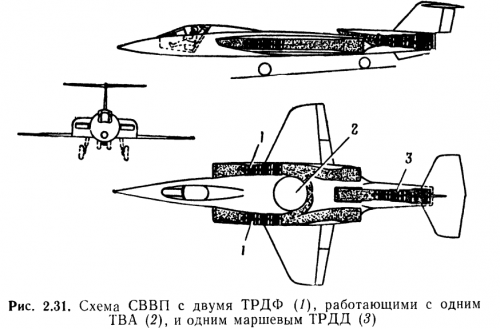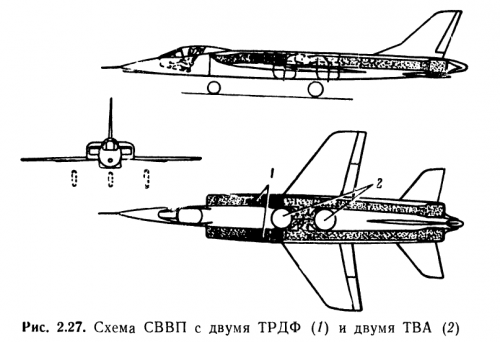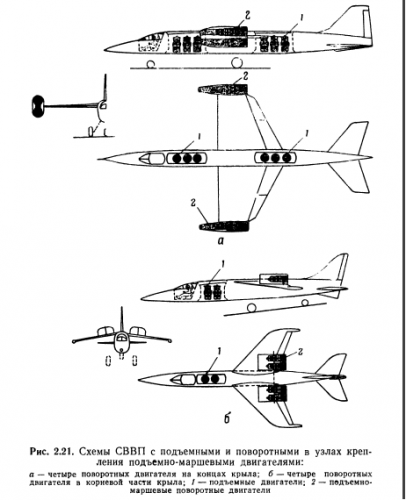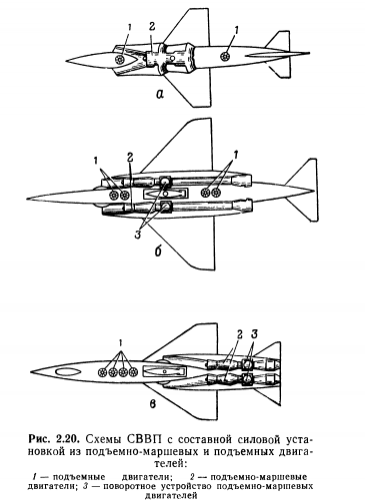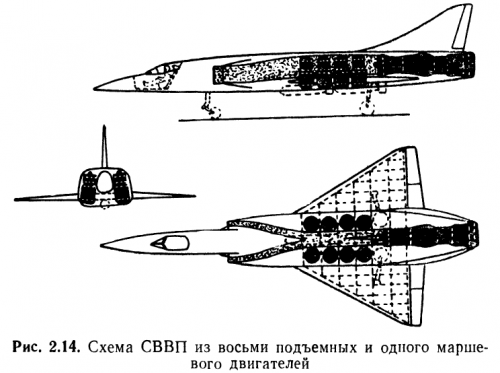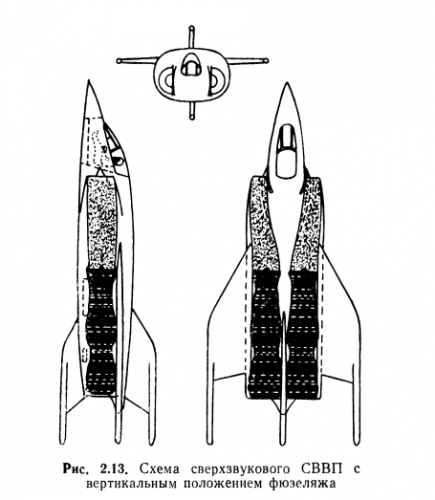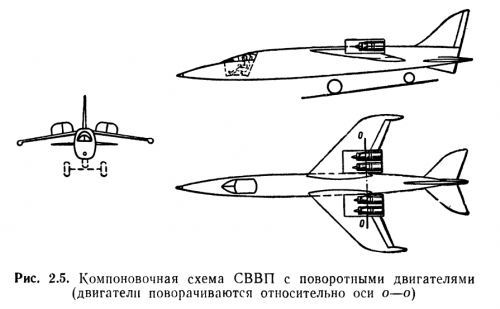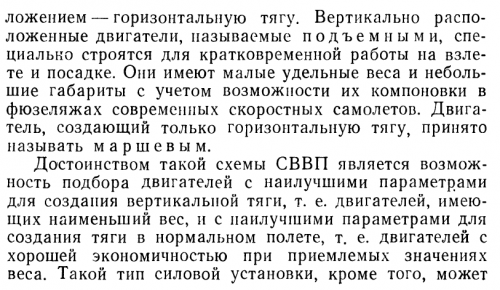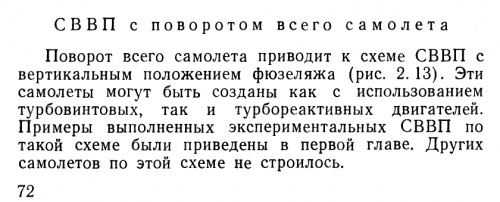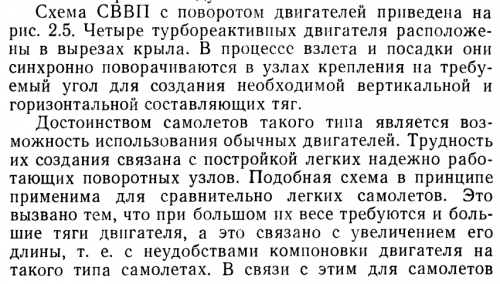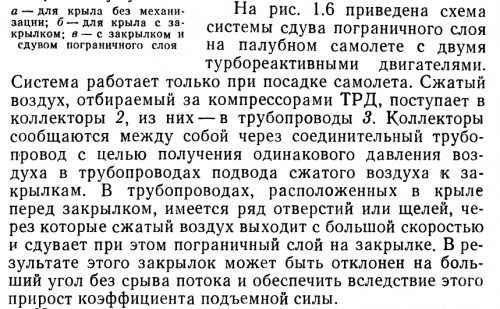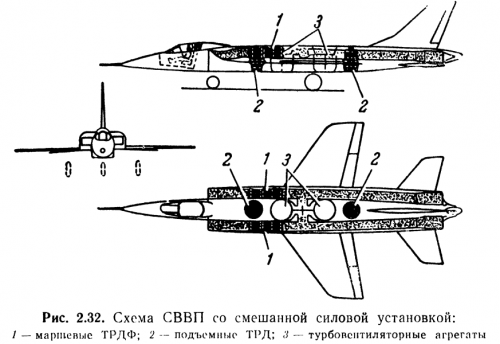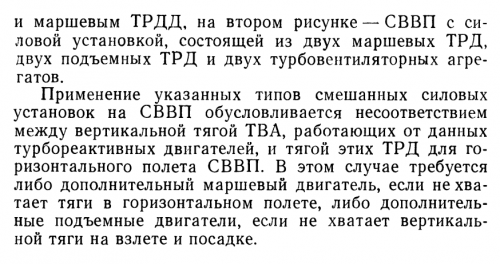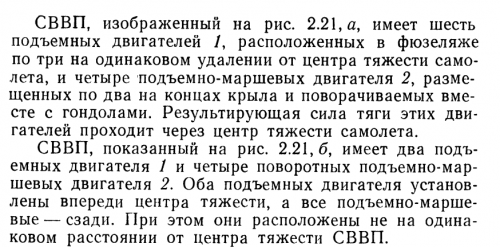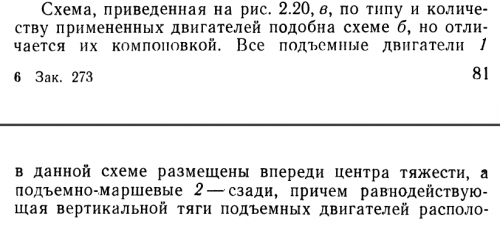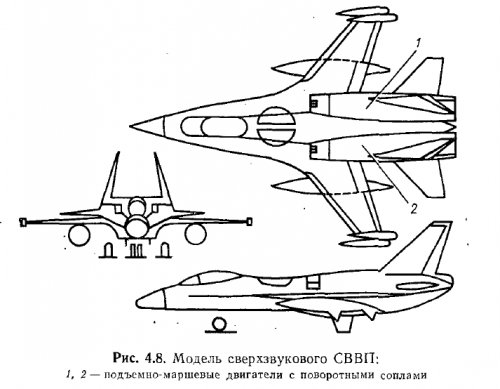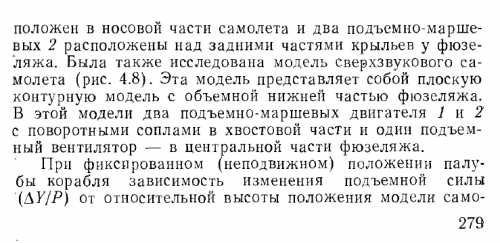PLANES
Vertical takeoff AND LANDING
Military Publishing House
Ministry of Defense
MOSCOW - 1966
UDC 623.746.4
Doctor of Technical Sciences Pavlenko VF
PLANES vertical takeoff and landing
The book is devoted to new types of aircraft - aircraft vertical takeoff and landing (VTOL). These aircraft can get rid of the cumbersome and vulnerable airfields and perform a wide and rapid maneuver aircraft. They also allow for more efficient and economical to transport passengers and cargo on local airlines.
The book outlines the features of the design and operation of aircraft vertical takeoff and landing, provides a large number of possible schemes of these aircraft. Much attention is paid to the propulsion - the most important and determining unit aircraft vertical takeoff and landing. Also discussed transients VTOL flight with zero speed up to the speed at which sufficient aerodynamic forces, control and stabilization modes of vertical takeoff and landing, ways to improve flight safety issues and operational characteristics associated with exposure to gas-jet propulsion aircraft with vertical take-off and landing on the landing site and their interaction with the surfaces of the aircraft. In writing this book to use open content published in domestic and foreign literature.
The book is intended for engineers and technicians and pilots of the Air Force, for students and cadets of military aircraft maintenance and flight schools. It can be useful for aviation specialists of Civil Aviation and DOSAAF, for students of civil aviation training institutions, as well as for all those interested in aviation.
Pages
Introduction. . . . . . . . . . . . . . . . . . . . . . . . . .3
Chapter 1. Aircraft with short takeoff and probe-
respects and vertical take-off and landing. . . . . . . . .9
Reducing the takeoff and landing distance of aircraft
increasing the lift coefficient during
takeoff and landing. . . . . . . . . . . . . . . . . . .10
Reducing the takeoff and landing distance of aircraft
increasing the acceleration and deceleration during takeoff and Therefore
cage. . . . . . . . . . . . . . . . . . . . . . . . .20
Reducing the takeoff and landing distance of aircraft
the creation of the vertical component of the thrust force
installation. . . . . . . . . . . . . . . . . . . . . . .31
Provision of vertical takeoff and landing aircraft. .39
Chapter 2. Schemes aircraft vertical takeoff and landing. Characteristics
teristics and design features made ob-samples. . . . . . . . . . . . . . . . . . . . . . . . . .54
VTOL whose vertical and horizontal thrust created
are the same engines. . . . . . . . .
-
VTOL aircraft with rotation of the exhaust jets. . . . . . . . . .56
VTOL with turning engines or propellers. . . . . . .61
VTOL aircraft with the rotation of all. . . . . . . . . . .72
VTOL whose vertical thrust created a group
Sing engines, and the horizontal - the other. . . . . .73
VTOL with lifting and boosters. . . .74
VTOL with lifting and handling sustainer engine
fields. . . . . . . . . . . . . . . . . . . . . . . .81
VTOL aircraft with lift-acceleration and marching (lifting and
sustainer) engines. . . . . . . . . . . . . .87
VTOL propulsion having amplification units
tion traction. . . . . . . . . . . . . . . . . . . . . .90
VTOL aircraft with turbofan units gain
traction. . . . . . . . . . . . . . . . . . . . . . . .92
VTOL aircraft with engines having ejector units
gain traction. . . . . . . . . . . . . . . . . . . .97
VTOL mixed powerplant. . . . . . .98
Chapter 3. Patterns and general characteristics of power plants
aircraft vertical takeoff and landing. . . . . . . . .101
Common power plants. . . . . . . . . . . . . . . .102
Constituent power plants. . . . . . . . . . . . . .121
Power plants with units gain traction. . . . .135
Chapter 4. Control and stabilization of the aircraft vertices
cally takeoff and landing. . . . . . . . . . . . . . .144
Classification and general characteristics of Governors
devices. . . . . . . . . . . . . . . . . . . . . . .-
Control forces and their impact on the basic data
VTOL propulsion. . . . . . . . . . . . . . .157
Comparative evaluation of control devices. . . . . . 178
Chapter 5. Basic data VTOL propulsion. . . .187
Determination of basic data and specific parameters sys-
lovyh installations VTOL. . . . . . . . . . . . . . . .188
Definition diametrical size turbofan
aggregates. . . . . . . . . . . . . . . . . . . . . . .200
Dependence of the specific vertical thrust and specific distribution
fuel consumption of power plants on a VTOL parameters
workflow. . . . . . . . . . . . . . . . . . .202
The share of the engine VTOL. . . . . . . . . . . . .226
Chapter 6. Transitional regimes airplane vertical
takeoff and landing. . . . . . . . . . . . . . . . . . . . .237
Transitional regimes VTOL with a single power plant 238
Transitional regimes VTOL with integral power installed
Coy. . . . . . . . . . . . . . . . . . . . . . . . . .243
Transitional regimes VTOL propulsion having
ing units gain traction. . . . . . . . . . . . . .247
Comparison of the characteristics of different types of power plants
transient flight regimes. . . . . . . . . . . .259
Chapter 7. Safety VTOL flight. . . . . . . . . . . . .264
Features VTOL flight with a single power plant
failure of the engine. . . . . . . . . . . . . . . . .265
Features VTOL flight with integral power installed
Coy with engine failure. . . . . . . . . . . . . . .279
Features VTOL flight with the power plant, which has
units gain traction with engine failure. . . . .286
Chapter 8. The impact of the exhaust jet propulsion
VTOL aircraft during takeoff and landing areas and the plane. . .288
The destructive effect of the exhaust jet on takeoff posa-
zling site. . . . . . . . . . . . . . . . . . .-
Nature of the flow of the jet after it hit the surface
landing site. . . . . . . . . . . . .295
Protection runways from the destructive
the action of the jet. . . . . . . . . . . . . . . . . . .305
Getting reflected from the surface of the jet on the runway
input into the engine. . . . . . . . . . . . . . . . . . .308
Drain effect on VTOL jet exhaust. . .311
Chapter 9. Evaluation of basic data and details of their VTOL
characteristics. . . . . . . . . . . . . . . . . . . . . . .316
The method of comparative evaluation of VTOL aircraft with different power
units. . . . . . . . . . . . . . . . . . . . . .-
Features VTOL performance with different types of sys-
lovyh installations. . . . . . . . . . . . . . . . . . . 319
Evaluation of basic data VTOL different purposes with unit
tion and an integral power plants and power Charter
Novki with TBA. . . . . . . . . . . . . . . . . . . . .337
Literature. . . . . . . . . . . . . . . . . . . . . . . . .342

